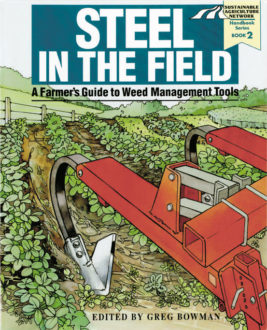ABCs of Mechanical and Cultural Weed Management
In a sustainable farm plan, each type of implement is only one part of a long-term weed management strategy. Any tool will disappoint when it's asked to do more than it was designed to do. A successful strategy distributes weed-limiting and weed-killing roles into complementary parts. The benefits of crop diversity and soil improvements in lowering weed pressure increase over time. This trend lessens the economic hit when weed control steps face difficulty.
Critical principles of sustainable, integrated weed control using steel or flame include:
A. Give the crop the advantage.
Steel tools succeed best when you focus on weed prevention, lessening the vigor and number of weeds that need to be killed. Delayed planting is a key here. Crops germinate quicker in warmer soil. They spend fewer days in the ground before they begin to outgrow weeds or form a shady canopy that sets back weeds.
Intensive, early season weeding is a second distinguishing feature of a system based on mechanical weed control (MWC). It keeps crops ahead by hitting weeds as soon after germination as possible - long before they are a physical threat to the crop. Causing weeds to die by physical means (tearing, cutting, root drying or flaming) is much easier and more efficient when the weeds are tiny and vulnerable. By the time they threaten the crop with shading and competition for soil moisture and fertility, they are much more difficult to kill with cultivation. Postemergent herbicide application gives a little more leeway.
